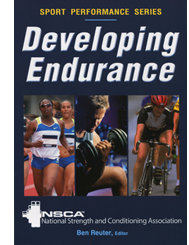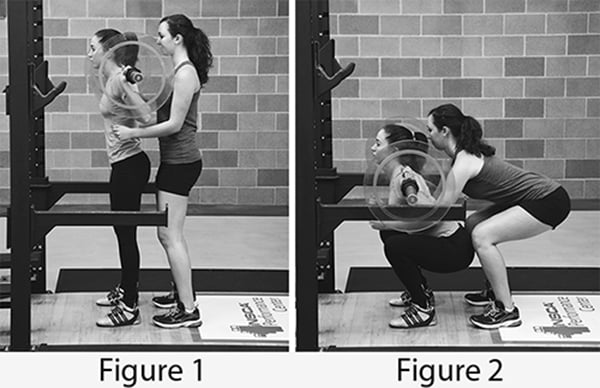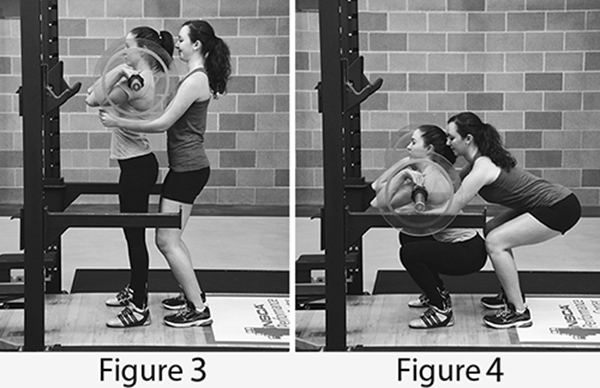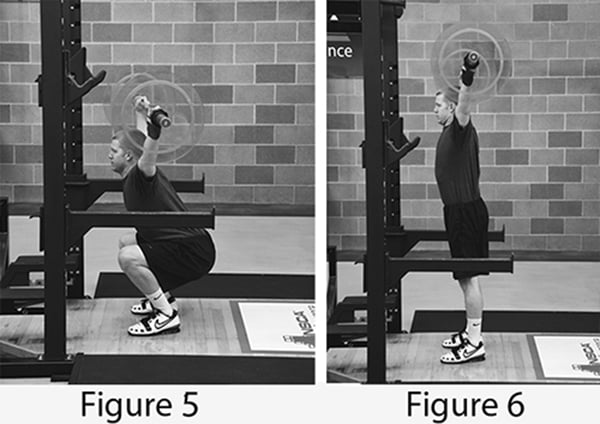Anaerobic and Muscle Endurance Development
by Developing Endurance
Kinetic Select
May 2017
This article provides essential guidelines for athletes beginning a strength and conditioning program that ensures safety and productivity of the training sessions.
The following is an exclusive excerpt from the book Developing Endurance, part of the NSCA’s Sport Performance Series with Human Kinetics. All text and images provided by Human Kinetics.

Lifting Guidelines
The following guidelines provide basic information that is essential for safe and productive resistance training. Experienced lifters may already know some of this information, but for beginner lifters, understanding these guidelines will be useful whenever they perform resistance training sessions in the weight room.
Technique
Lifters often need to lift a bar or dumbbells off the floor before getting into the starting position for an exercise (e.g., bent-over row, biceps curl, dumbbell flat or incline bench press or fly, upright row, barbell lying triceps extension, stiff-leg deadlift). To avoid excessive strain on the low back, athletes need to place the body in the correct position to lift the weight safely and effectively. Athletes can do this by following these guidelines:
• Use the correct stance in relation to the bar or dumbbells and properly grasp the bar or dumbbell handles.
• Place the feet between hip- and shoulder-width apart.
• Squat down behind the bar or between the dumbbells.
• If lifting a bar, position the bar close to the shins and over the balls of the feet, and grasp the bar with a closed grip that is shoulder-width (or slightly wider) apart.
• If lifting dumbbells, stand directly between them and grasp the handles with a closed grip and a neutral arm or hand position.
• Position the arms outside the knees with the elbows extended.
Before lifting a weight off the floor, athletes must place their body in the correct preparatory position. The following guidelines also describe how the body should be positioned immediately before the first repetition of a power exercise (e.g., snatch, power clean).
• The back is flat or slightly arched.
• The trapezius is relaxed and slightly stretched, the chest is held up and out, and the scapulae are held together.
• The head is in line with the spine or slightly hyperextended.
• Body weight is balanced between the middle and balls of the feet, but the heels are in contact with the floor.
• The shoulders are over or slightly in front of the bar.
• The eyes are focused straight ahead or slightly upward.
Weight Belts
The use of a weight belt can contribute to injury-free training. The decision on whether to use a belt should be based on the type of exercise and the relative load being lifted. Weight belts are most appropriate in the following situations:
• During exercises that place stress on the low back (e.g., back squat, front squat, deadlift, etc.).
• During sets in which near-maximal or maximal loads are being used.
The use of a weight belt in these situations may reduce the risk of injuries to the low back—but only when combined with correct exercise technique and proper spotting. Note that some people may have increased blood pressure as a result of wearing a weight belt. Elevated blood pressure is associated with dizziness and fatigue and could result in headaches, fainting, or injury. Additionally, people with hypertension or any preexisting cardiovascular condition should not wear a weight belt because doing so might lead to a heart attack or stroke.
Squat
The athlete assumes a shoulder-width stance, holding the barbell on top of the scapulae and trapezius (Figure 1). The hands are slightly wider than the shoulders. The toes may be pointed outward slightly.
1. Keeping the torso erect, the athlete squats by sitting back with the hips until the top of the thighs are parallel to the floor (Figure 2).
2. The athlete then extends the legs at the hips and knees to return to the starting position.

Front Squat
The athlete assumes a shoulder-width stance, with the toes pointing out slightly. She positions the elbows as high in front of the body as possible so that the barbell rests on the front of the shoulder (Figure 3). The hands are slightly wider than the shoulders.

1. Keeping the torso erect, the athlete squats by lowering the body at the knees and hips until the top of the thighs are parallel to the floor (Figure 4). She keeps the elbows elevated as high as possible.
2. The athlete then extends the legs at the hips and knees to return to the starting position.
Overhead Squat
The athlete begins in a shoulder-width stance, holding the barbell overhead with a snatch grip. He pushes the head through so the arms are behind the ears in a locked-out position (Figure 5). The toes may be pointed outward slightly.

1. The athlete squats by sitting back with the hips until the top of the thighs are parallel to the floor (Figure 6). He keeps the torso in a rigid and erect position while maintaining good balance.
2. The athlete then extends the legs at the hips and knees to return to the starting position.
Developing Endurance, published by Human Kinetics, offers assessment tools, analyses, and instruction to define specific needs and establish effective training goals. The book is available in bookstores everywhere, as well as online in the NSCA Store.
- Privacy Policy
- Your Privacy Choices
- Terms of Use
- Retraction and Correction Policy
- © 2025 National Strength and Conditioning Association